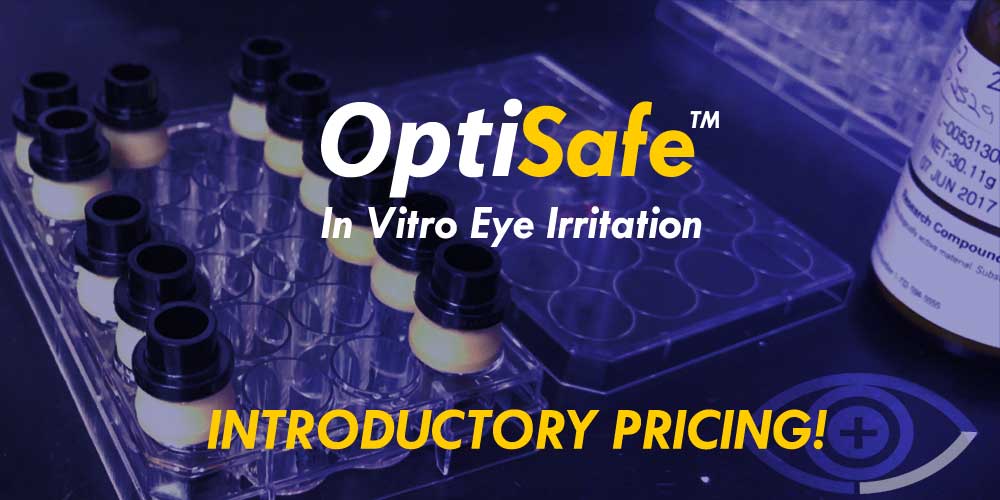
www.mbresearch.com/optisafe/index.htm
OptiSafe™ – Non-animal Eye Irritation Testing is now offered by MB Research Labs with special Introductory Pricing.
www.mbresearch.com/optisafe/index.htm
What is OptiSafe™?
OptiSafe™ is an acute in vitro irritation test method used to determine the ocular irritation potential based of a test substances utilizing a set of biochemical tests (mostly performed in parallel; “multiplexed”) which evaluate the potential of the test substance ability to disrupt, denature and degrade biological molecules. These measured values are relevant to GHS and EPA standard ocular safety classification systems.
How does OptiSafe™ work?
Evaluated Mechanisms of Ocular Injury and Prediction Models
Different ocular irritants including, acids/bases, alcohols/aldehydes/ketones, strong oxidants and reactive chemicals/mixtures, damage the cornea and other tissues through additive and/or synergistic chemical reactions and biophysical effects. Evaluated mechanisms of injury include:
- Denaturation of specific water insoluble polymers that model the phospholipid bilayer of cells (which can occur at the corneal epithelium and conjunctiva).
- Direct denaturation of macromolecules that model ordered collagen (which can occur at the corneal stroma).
Indirect denaturation of molecules across a membrane via osmotic effects (osmotic effects across the corneal epithelium and stroma can damage the cornea). - Potential to damage tissue via excessive oxidation and reactivity (which can occur at the epithelium, stroma, conjunctiva and iris).
- Potential to damage tissues via extreme buffering (which can occur at the epithelium, stroma, conjunctiva and iris).
NICEATM reviewed a validation study conducted by the OptiSafe™ test method developer, Lebrun Labs, and concluded that the study data indicated that the OptiSafe™ method compared favorably to other in vitro ocular toxicity testing methods. NICEATM is currently coordinating a validation study of the OptiSafe™ test method to demonstrate the reproducibility of the method among Lebrun Labs and two naïve laboratories. The study received support from an NIEHS Small Business Innovation Research grant. The study is ongoing and is expected to be completed in mid-2018.
MB Research Labs is a primary testing source using OptiSafe™ and has been deeply involved in the validation of OptiSafe™.